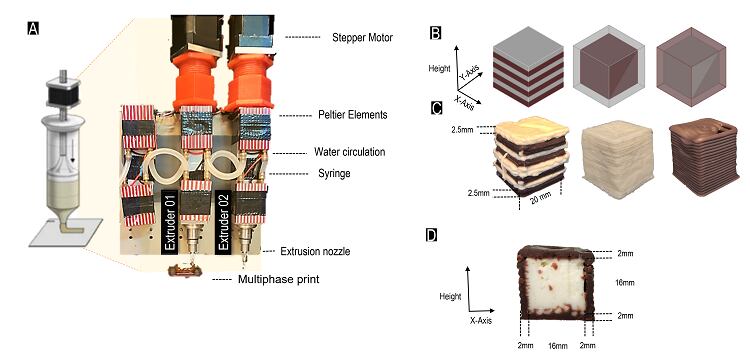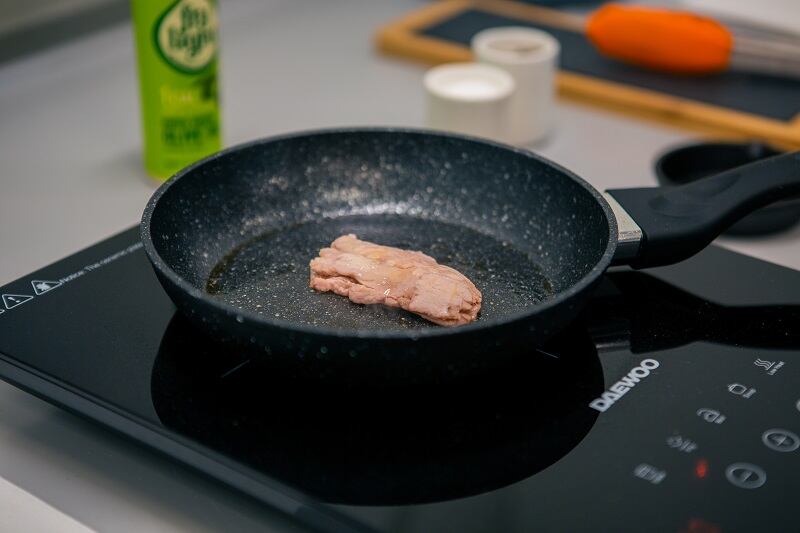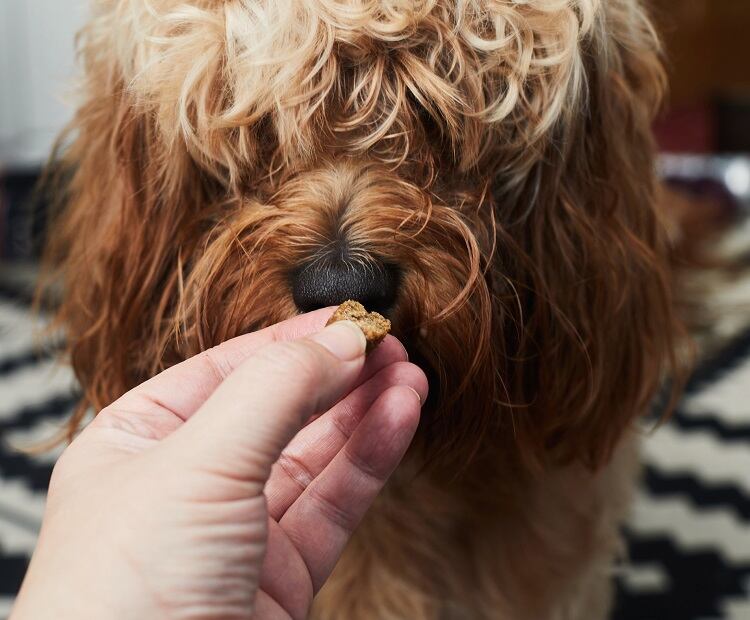3D-printed food can do many things. It can print real meat, plant-based fish, and even stimulate remembering in the old through tastes linked with memory.
But in a paper published in the journal Food Quality and Preference, researchers explored the ability of 3D-printing to reveal more about how we taste.
The researchers 3D-printed seven different layered structures of chocolate and cream cheese, generating different textures. They then recruited 120 people from Bern University of Applied Science, School of Agricultural, Forest and Food Sciences to taste the structures. Afterwards, the subjects were asked to complete a questionnaire on their overall liking of the structures, as well as mouthfeel, appearance and taste.
“Our data suggest that it is possible to alter both temporal and overall sensory perception by tailoring 3D structures using additive manufacturing (AM),“ Johannes Burkard, one of the researchers, tells FoodNavigator.
“We observed that the 3D arrangement of two sensorially and texturally different masses modulated overall liking scores, notably due to the differences in mouth feel and taste,” continues Burkard.
The experiment highlighted “the importance of texture-taste interactions on a physical level, especially when pairing two sensorially distinct phases like we did.” Namely, the interplay between the texture and taste of the two foods was vital in determining how people tasted them.
“Therefore,” concludes Burkard, “it is clear that flavour is not created solely by taste, but by the combination of visual appearance, temporal texture, and aroma.”
“It is clear that flavour is not created solely by taste, but by the combination of visual appearance, temporal texture, and aroma.”
The possibilities presented by 3D-printing
Without 3D-printing, and specifically additive manufacturing, these discoveries may not have been possible. By allowing them to intricately craft the structure of foods, it provides researchers with far more flexibility in the research they can do.
“As a researcher, it can facilitate the creation of complex shapes through AM to help unravel the mysteries of how perception is formed,” Burkard tells us. “It provides an easy-to-adjust approach to decipher the fundamentals of flavour perception.
“From an industrial standpoint,” he goes on, “this approach hopefully demonstrates how the perception of food can be modified easily by arranging two different masses using AM to create novel classes of food products with tailored perceptions.”
Sourced From: Food Quality and Preference
‘Impact of spatial distribution on the sensory properties of multiphase 3D-printed food configurations’
Published on: 22 March 2023
DOI: https://doi.org/10.1016/j.foodqual.2023.104850
Authors: J. Burkard, A. Nain Shah, E. Harms and C. Denkel




